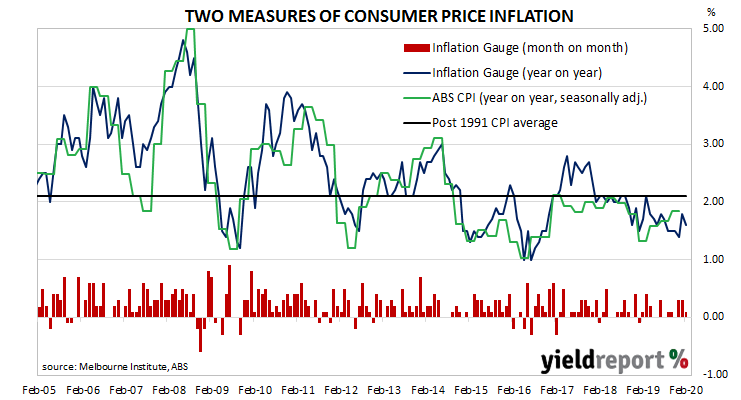The RBA’s stated objective is to achieve an inflation rate of between 2% and 3%, “on average, over time.” Since the GFC, Australia’s inflation rate has been trending lower and lower and it has been below the RBA’s target band for some years now. Despite the RBA’s desire for a higher inflation rate, attempts to accelerate inflation through record-low interest rates have failed to date.
The Melbourne Institute’s latest Inflation Gauge index increased by 0.1% through February following 0.3% increases in December and January. On an annual basis, the index increased by 1.6%, down from January’s comparable rate of 1.8%.
Domestic bond yields at the short end finished lower but, overall, local yields largely discounted significant overnight falls in US markets. By the end of the day, 3-year ACGB yields had shed 5bps to 0.45%, the 10-year yield slipped 1bp to 0.80% while the 20-year yield finished unchanged at 1.22%.
Expectations of another cut in the cash rate target hardened as traders suddenly became convinced the RBA would act in anticipation of a coronavirus-led slowdown. By the end of the day, March contracts implied a 25bps rate cut had been totally priced in, up from the previous day’s 18%. April contracts factored in a March rate cut plus a 76% chance of an additional rate cut at the start of the month. Previously, April contracts had implied a 73% chance of just one rate reduction.

